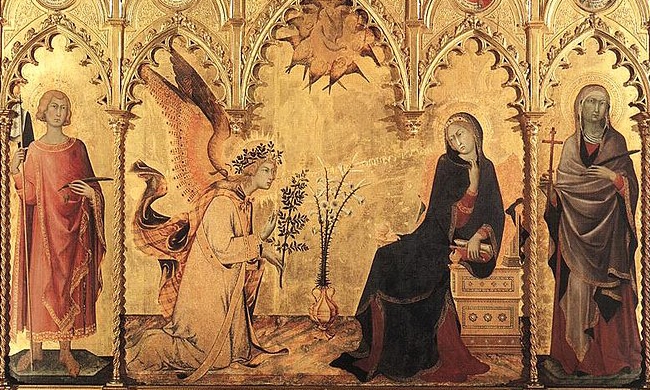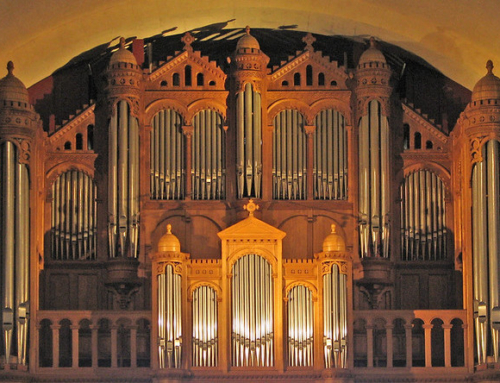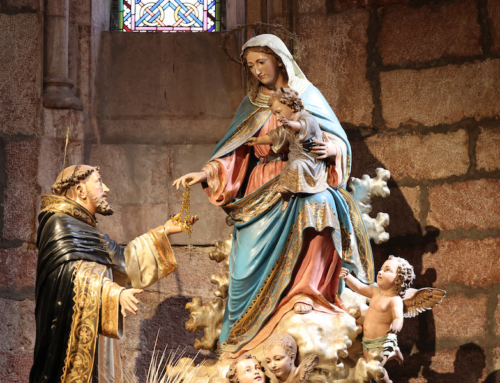Editor’s note: This is the fourth post in our newest series, Beholding True Beauty, which consists of prayerful reflections on works of sacred art. The series will run on Tuesdays and Thursdays throughout the month of October. Read the whole series here.
Amidst the Church’s vast treasury of sacred music, there can be a tendency for certain gems to collect dust over the centuries, only to be rediscovered, polished up a bit, and placed on more prominent display, where they can be admired for their glorious beauty and even used to aid contemplation and prayer. Such is the case with the works of Josquin des Prez, an iconic French writer of sacred Renaissance polyphony, who until the past few decades was perhaps the most respected and influential composer that hardly anyone outside a Western music history class ever heard of.
Josquin des Prez is a shadowy figure, for lack of biographical details, but his place in the development of sacred music composition is well established. Straddling the 15th and 16th centuries, Josquin was the greatest master of the high Renaissance polyphonic style. This style, simply put, involves two or more musical voices that are melodically independent but harmonically interdependent. Josquin was widely admired during his lifetime and after, not just for his technical abilities as a composer, but also for the ease and clarity of his writing, and the expressiveness and ingenuity of his music in conveying the meaning of the sacred text.
Consider one of Josquin’s best-known works, his motet, Ave Maria…Virgo Serena. Recordings of this piece can be found on YouTube or iTunes (the recording by The Tallis Scholars (2006) is recommended). The musical score, containing the vocal parts and Latin text, is available online for free. The text is a prayer to the Blessed Virgin Mary, beginning with the Angelic Salutation, followed by rhymed verses on five Marian feasts, and closing with a petition to the Mother of God.
A piece such as this can be more fully appreciated through multiple listenings; the modern ear is not typically accustomed to the style of Renaissance polyphony. With this in mind, consider listening to the piece several times, each time with a different focus: 1) simply listen, and make note of any general impressions you may have; 2) read about its basic musical structure, and follow along with the score as you listen; 3) consider the music as it illuminates the meaning of the sacred text.
To assist with the second listening, consider these observations:
Basic Musical Structure of Ave Maria…Virgo Serena
Opening sequence (Angelic Salutation):
The piece involves four voices, equivalent to soprano, alto, tenor, and bass. Notice how the opening lines representing Gabriel’s greeting are simple and straightforward. One voice begins, then the other three voices “imitate” it one after the other, such that there is a cascade from higher voices to lower voices; this can be seen as symbolizing the heavenly communication of Gabriel to Mary on earth.
Just as the fourth voice enters with its imitation of “Dominus tecum,” there is an abrupt change in the pattern: the alto voice introduces a new line, “Virgo serena,” more quickly imitated by the other voices. The melody becomes more florid (“mellifluous”) as all four voices sing together in harmony to the end of the phrase.
Rhymed verses (Five Marian Feasts):
Note that each verse, devoted to a separate Marian feast, begins with “Ave,” which is a helpful cue.
Immaculate Conception (“Conceptio”): This begins with two voices an octave apart, then is imitated by three voices, which is a surprising technique that gives the impression of spaciousness. The highest note in the entire piece, an F, is reached three times at these words: “conceptio,” “plena,” and “laetitia.” All four voices are together in harmony for the second half (“homophony”), conveying a sense of fullness to illustrate the joy that “fills heaven and earth.”
Nativity of Mary (“Nativitas”): Two voices, now a fifth apart, introduce the verse, then are imitated by two lower voices, also a fifth apart. The voices seem to embrace each other in their relative closeness, providing a serene, intimate quality for the birth of Mary. The next phrase, referring to the Morning Star, has a cascading sequence somewhat like the beginning of the piece. The parallel to the Angelic Salutation is appropriate, since Mary as the Morning Star heralds the true Sun, our Savior.
Annunciation (“Annunciatio”): There is no imitation in this verse, simply two voices at a time introducing each phrase. Compared to what preceded and what follows, this is strikingly bare and simple, perhaps conveying Mary’s humility and the hiddenness of her life. There is text painting for the phrase containing “annunciatio,” with the melody in each voice descending in stepwise fashion.
Purification/Presentation in the Temple (“Purificatio”): Instead of four beats per measure in this verse, there are now only three: a perfect number, possibly symbolizing Mary’s virginal perfection. In fact, the number three is conveyed in numerous ways in the lines depicting her virginity and chastity: three voices enter together, each a third apart, repeating the same note three times; the highest voice conveys the overall melody here, which consists of only three different notes. This is the most hymn-like (“homophonic”) of the verses, and arguably praises Mary most of all, while at the same time having a simple, lullaby-like quality. Keep in mind that Mary has just given birth!
Assumption (“Assumptio”): This verse contains different patterns of imitation from voice to voice. When the words “omnibus” and “virtutibus” occur in the top voice, the other voices are sounding but in very independent fashion, achieving great freedom and spaciousness (this is further enhanced by runs of eighth notes). There is text painting on the word “assumptio,” with the melody rising to represent the event.
Closing petition:
All four voices are together, with bold, lengthy syllables for the petition, “Mother of God, remember me. Amen.” On the word “Dei,” the highest note, F, is reached for the last time. The piece closes in a simple, unassuming manner.
On repeated listenings, especially as you come to meditate on the mysteries themselves as they are conveyed in this beautiful piece of music, consider approaching them in much the same way that you would the mysteries of the Rosary. Meditating on these mysteries is an important way of coming to know Christ. As Dom Marmion wrote, “Those who do not know the Virgin, those who do not have a real love for the mother of Jesus, risk not having a fruitful understanding of the mysteries of the human nature of Christ” (Christ in His Mysteries).
For more information on Josquin des Prez and his work, please see The New Grove High Renaissance Masters (Sadie) and Music in the Renaissance (Brown and Stein).
✠
Image: Simone Martini, Annunciation with St. Margaret and St. Ansanus







